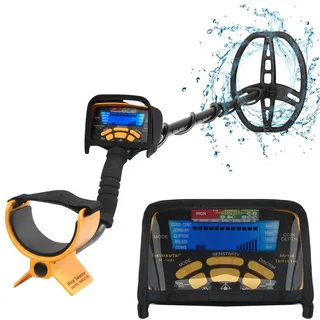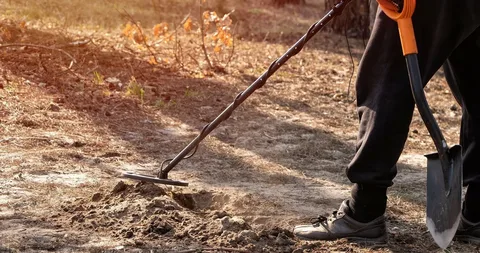The mining process has long been a labor-intensive and potentially hazardous industry, but with the advancements in technology, it is now undergoing a significant revolution. Advanced technologies have the potential to transform the way mining is conducted, enabling greater efficiency, safety, and environmental responsibility. In this article, we will explore how advanced technologies are revolutionizing the mining process and the impact they are having on the industry.
Revolutionizing the mining process with advanced technology involves the use of innovative tools and techniques to maximize efficiency and sustainability in mining operations. This can include the use of autonomous vehicles, drones, and advanced data analytics to improve safety, reduce environmental impact, and increase productivity. Additionally, the integration of artificial intelligence and machine learning can optimize the extraction and processing of minerals, leading to cost savings and improved resource recovery. Overall, advanced technology has the potential to transform the mining industry by making operations more efficient, safer, and more sustainable.
The Basics of Mining Process: A Step-by-Step Guide

The Basics of Mining Process: A Step-by-Step Guide provides an in-depth look at the various stages involved in mining, from exploration and development to production and reclamation. It covers the key principles and practices involved in each stage, including the use of technology and machinery, safety and environmental considerations, and the regulatory framework that governs mining operations. The guide is designed to be a comprehensive resource for those who are new to the mining industry or seeking to gain a better understanding of the processes involved.
Understanding the Environmental Impact of the Mining Process

Mining has a significant impact on the environment, including air, water, and soil pollution, destruction of wildlife habitats, and disruption of ecosystems. The process of extracting minerals and ores from the earth often involves the use of toxic chemicals, heavy machinery, and vast amounts of energy, all of which contribute to environmental degradation. Understanding the environmental impact of mining is crucial for developing sustainable practices and mitigating negative effects on the planet. This includes implementing proper waste disposal and reclamation measures, promoting responsible resource extraction, and investing in cleaner and more efficient mining technologies. By considering the environmental impact of the mining process, we can work towards minimizing harm to the planet while meeting the demand for valuable resources.
Mining Process: How Technology is Changing the Industry

The mining industry is being transformed by technology in several ways. Automation and remote operation technologies are becoming more common, allowing for greater efficiency and safety in mining operations. Advanced sensors and monitoring systems are also being used to improve the accuracy and reliability of mining processes. Additionally, data analytics and artificial intelligence are being employed to optimize resource management and decision-making. These technological advancements are leading to increased productivity and sustainability in the mining industry.
The Importance of Safety Protocols in the Mining Process

Safety protocols are crucial in the mining process to ensure the well-being of workers and to prevent accidents and injuries. These protocols include training for all personnel, regular equipment inspections, the use of personal protective equipment, proper ventilation, and emergency response procedures. By implementing and following strict safety protocols, mining operations can minimize the risks associated with the inherently dangerous nature of the industry and protect the lives and health of their workers. Additionally, adherence to safety protocols can also help companies avoid costly fines and legal repercussions, as well as maintain a positive reputation within the industry. Overall, the importance of safety protocols in the mining process cannot be overstated.
An Inside Look at the Economic Benefits of the Mining Process

The mining process contributes significantly to the economy through various avenues. Firstly, it creates employment opportunities for individuals in the local communities where mines are established. This not only reduces unemployment rates but also improves the standard of living for many people.
Additionally, mining activities generate revenue through the sale of raw materials such as coal, gold, diamond, and other minerals. This revenue contributes to the overall GDP of the country and can be used to fund various government projects and services.
Furthermore, the mining process leads to the development of infrastructure such as roads, bridges, and ports, which are essential for transporting raw materials to markets. This infrastructure development also benefits the local communities and stimulates economic growth in the region.
Moreover, the mining industry contributes to technological advancements and innovation, which can have a positive impact on other sectors of the economy. For example, advancements in mining technology can lead to improvements in environmental sustainability and safety practices, which can be applied in other industries as well.
Overall, the economic benefits of the mining process are multi-faceted and play a crucial role in the development and growth of economies around the world.
The Role of Geologists in the Mining Process
Geologists play a crucial role in the mining process by identifying potential mineral deposits, assessing their economic viability, and providing guidance on the most efficient and environmentally sustainable methods of extraction. They use a combination of fieldwork, remote sensing, and geological mapping to locate mineral resources and analyze their characteristics. Geologists also work closely with engineers and other specialists to develop effective mining plans and ensure the safety and sustainability of mining operations. Additionally, they monitor the impact of mining activities on the surrounding environment and help devise strategies for land reclamation and restoration. Overall, geologists contribute essential expertise to the entire lifecycle of a mining project, from exploration and development to production and closure.
Sustainable Practices in the Mining Process
See also: gold & metal detector
Sustainable mining practices involve reducing environmental impacts, conserving natural resources, and promoting the health and safety of workers and local communities. These practices may include using renewable energy sources, implementing efficient water management strategies, and controlling air emissions. Additionally, responsible mine closure and land reclamation play a key role in minimizing long-term environmental impacts. By integrating sustainable practices into the mining process, companies can minimize their ecological footprint and contribute to the long-term well-being of the planet.
The Future of the Mining Process: Trends and Innovations
The future of the mining process is poised to be shaped by several key trends and innovations. Automation and the use of advanced robotics are expected to revolutionize the way mining is conducted, enhancing safety and efficiency while reducing the need for human labor in hazardous environments.
Additionally, the use of artificial intelligence and machine learning algorithms will enable mining companies to optimize exploration and extraction processes, leading to more accurate resource estimation and improved decision-making.
Furthermore, the integration of advanced sensor technologies and Internet of Things (IoT) devices will enable real-time monitoring and control of mining operations, leading to greater productivity and cost savings.
Environmental sustainability is also a key focus for the future of mining, with the industry increasingly embracing renewable energy sources and adopting more eco-friendly practices to minimize its impact on the environment.
Overall, the continued adoption of cutting-edge technologies and a focus on sustainable practices are expected to drive significant advancements in the mining process in the years to come.
Challenges and Opportunities in the Modern Mining Process
Challenges in modern mining processes include environmental concerns, such as air and water pollution, and habitat destruction. Additionally, there are health and safety issues for workers, as well as the high costs and technical difficulties of extracting resources from deeper and more remote locations.
Opportunities in modern mining processes include advancements in technology, such as automation and remote operation, which can improve safety and efficiency. There are also opportunities for sustainable mining practices, including reclamation and restoration of mined areas, as well as the development of alternative mining methods that minimize environmental impact. Additionally, the increasing global demand for resources presents opportunities for growth and investment in the mining industry.
The Social and Cultural Impact of the Mining Process
The mining process can have significant social and cultural impacts on local communities and the environment. This includes the displacement of communities and disruption of traditional land uses, as well as potential impacts on local cultures and practices. Mining can also lead to changes in local economies and social structures, as well as potential conflicts over land, resources, and labor. Additionally, the mining process can have environmental impacts that affect the health and well-being of local communities, including air and water pollution, habitat destruction, and the release of hazardous waste. Overall, the social and cultural impacts of the mining process require careful consideration and mitigation to ensure the well-being of affected communities and the preservation of local cultures and environments.

